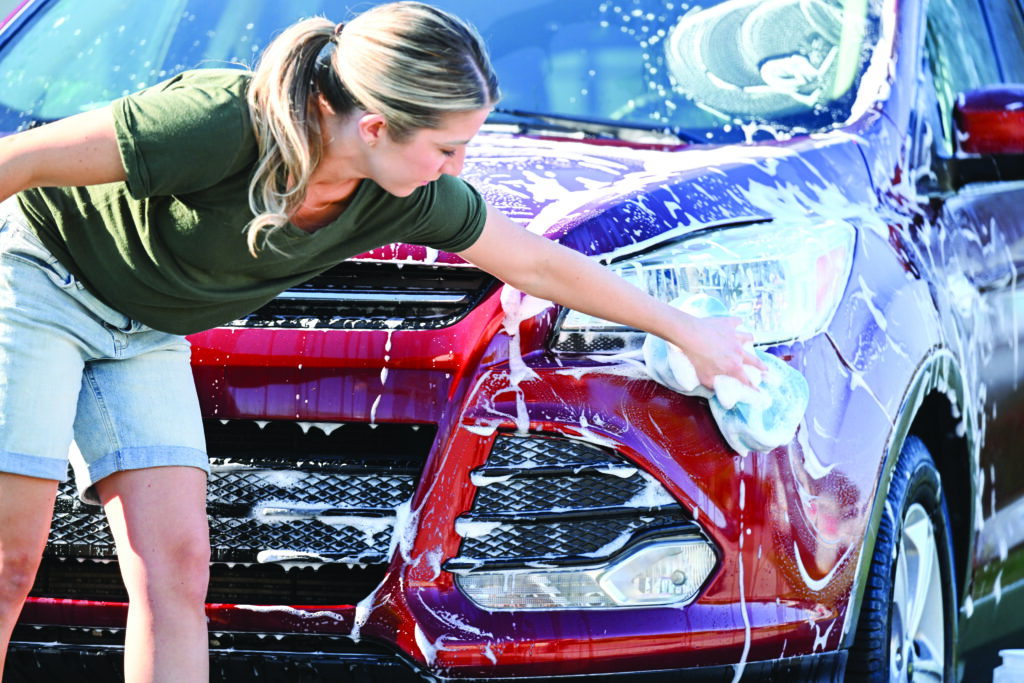Why Handwashing Your Car Outshines Automatic for Detailing

The typical automatic car wash rapidly addresses general exterior cleaning. It employs commercial – grade car wash soaps, water – based waxes, and high – pressure rinses. However, this swift, industrial method overlooks crucial details and may give rise to long – term problems.
An automatic car wash lacks the precision to target areas where dirt accumulates, such as the junctions of running boards and rocker panels on trucks, side mirrors, or wheel well interiors. Frequently, its fast – moving components don’t allocate sufficient time to rinse away dust and dirt, often leaving streaks of brown water near the rear license plate or bumper.
In contrast, handwashing is more comprehensive, enabling a deeper clean. With a handwash, you can concentrate on the dirtiest spots, using a targeted rinse and a wash mitt for scrubbing. This effectively cleans areas that car wash sprayers can’t reach well.
When you handwash your car, investing time and following the procedures of your chosen products usually yields far superior results compared to an automatic car wash.
The Protective Benefits of Handwashing for Your Vehicle’s Paintwork

Commercial automatic car washes operate on standardized timings that fail to account for varying levels of vehicle contamination. This industrial approach creates significant risks for your car’s paintwork. When the initial rinse fails to completely remove accumulated dirt, dust, road salt, or sand particles, these contaminants transform into abrasives during the washing process. The situation becomes particularly problematic in brush-based systems, where rotating brushes retain abrasive materials from previous washes, essentially sanding your paint with every rotation and creating permanent micro-scratches that require professional correction.
Handwashing provides complete control over the cleaning process, offering multiple protective advantages. Unlike automated systems, you can:
• Perform thorough preliminary rinsing to eliminate surface contaminants
• Frequently replace wash mitts and microfiber cloths to prevent cross-contamination
• Apply optimal pressure tailored to each section of your vehicle
• Use paint-safe products specifically formulated to preserve existing wax coatings
This personalized approach becomes especially valuable for waxed surfaces. Handwashing enables you to maintain protective wax layers by using gentle techniques and pH-balanced cleaners – a level of care impossible to achieve in automated systems. The result is not just a cleaner vehicle, but one with better protected, longer-lasting paint that maintains its showroom-quality appearance for years.
The Psychological and Practical Benefits of Handwashing Your Vehicle
Handwashing your car offers far more than just aesthetic improvements—it fosters a deeper connection between owner and vehicle while delivering tangible long-term benefits. This hands-on approach cultivates pride in ownership, as the meticulous care invested in washing reflects personal standards of excellence. The process becomes a ritual of stewardship, with the finished product serving as a source of genuine accomplishment.
For younger drivers, regular handwashing demonstrates responsibility and maturity, helping establish trust with parents through consistent vehicle maintenance. The activity also serves as an educational opportunity, allowing owners to familiarize themselves with their car’s construction and mechanical components—knowledge that proves invaluable for future repairs and modifications.
Perhaps most importantly, the intimate inspection involved in handwashing enables early detection of potential issues like rust formation, tire wear, or brake problems. This proactive approach to vehicle care can prevent minor concerns from escalating into costly repairs, ultimately preserving both your car’s value and your financial resources. The combination of psychological satisfaction and practical advantages makes handwashing a uniquely rewarding aspect of car ownership.
The Psychological and Behavioral Benefits of Handwashing: A Social Cognitive Perspective
handwashing one’s vehicle represents more than a maintenance activity – it serves as a meaningful exercise in self-efficacy development and environmental mastery (Bandura, 1986). This hands-on practice facilitates several cognitive and behavioral outcomes that extend far beyond surface cleanliness.
First, the ritual of manual car care enhances self-perceptions of ownership pride through performance accomplishment, a key source of self-efficacy (Bandura, 1997). The observable results (a clean vehicle) reinforce positive self-evaluations and satisfaction, creating a feedback loop that strengthens future maintenance behaviors. For novice drivers, this activity demonstrates proxy agency by visibly exhibiting responsibility to authority figures, thereby building social capital within familial hierarchies.
The process also facilitates enactive mastery experiences (Schunk, 1989). Physical interaction during washing provides tactile knowledge of vehicle components, lowering psychological barriers to future maintenance through accumulated hands-on experience.
Moreover, the inspection aspect exemplifies forethought capability (Bandura, 2001). Early problem detection (e.g., identifying rust or mechanical wear) demonstrates how present actions influence future outcomes, reinforcing the value of proactive maintenance. This anticipatory self-regulation represents a core component of SCT’s self-management model.
Ultimately, handwashing embodies emphasis on agentic behavior – the conscious, self-directed actions that shape one’s environment while fostering personal growth and mechanical competence.
Cost-Benefit Analysis: Handwashing vs. Automatic Car Wash Services
A comprehensive financial comparison reveals significant long-term savings potential when opting for handwashing over commercial car wash services. Current market analysis shows automatic car washes typically range from 9-30 for premium packages including touchless technology, wax applications, and undercarriage treatments. These recurring expenses accumulate substantially for vehicle owners who maintain regular washing schedules.
The initial investment in handwashing equipment – including a quality wash mitt (10-20), microfiber cloths (15-30), automotive-specific soap (10-20), dual 5-gallon buckets (15-25), pressure washer or hose (50-200), and tire brushes (5-15) – typically totals 100-300. This capital expenditure demonstrates rapid return on investment, as subsequent washes only require soap replenishment, reducing per-wash costs to 1-3.
Key financial considerations include:
1. Break-even point: Achieved after 10-15 washes compared to basic automatic services
2. Marginal cost: Near-zero after initial investment (excluding water utility costs)
3. Value retention: Proper handwashing techniques preserve vehicle finishes better than automated systems
4. Accessibility requirements: Requires access to suitable washing locations (driveways, permitted outdoor spaces)
For cost-conscious vehicle owners, handwashing presents a compelling economic proposition. Retailers like AutoZone offer complete starter kits, making the transition to DIY car care both accessible and financially advantageous. The combination of upfront investment and proper technique yields superior cleaning results at a fraction of recurring commercial service costs.